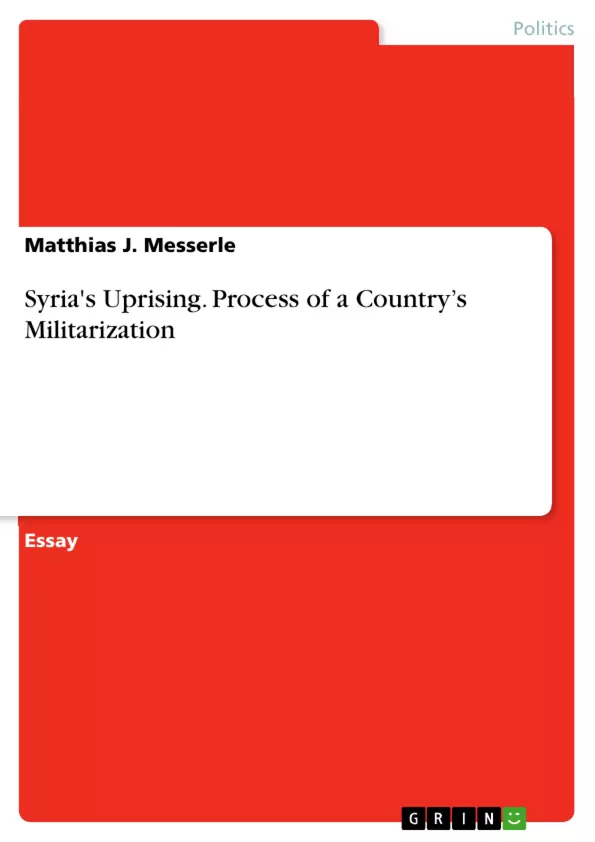This essay gives an answer to following questions: How did the opposition to Syrian president Assad develop from peaceful urban protest to militant Islamist resistance? How did regime violence contribute to the radicalization of the protesters? What role did foreign powers play in militarizing the conflict and preventing a peaceful solution? And, finally, how could a possible demilitarization and a lasting peace be brought about?
Addressing these questions involves examining the political landscape at the onset of the Syrian civil war in March 2011. Subsequently, a closer analysis is needed of the processes of militarization that occurred within both the regime and the opposition. Why did the Assad regime respond with brutal violence to an uprising whose slogan, as chanted in the streets of Damascus, sought nothing more than "God, Syria, Freedom and that’s all"?
When the popular uprisings against Syrian dictator Bashar al-Assad (b. 1965) began in early 2011, the Syrian demonstrators aimed to follow the wave of protests witnessed in Tunisia and Egypt. However, unlike Tunisia and Egypt, where the autocratic rulers Ben ʿAli (b. 1936) and Mubarak (b. 1928) were toppled by the uprisings in 2011, Syria descended into a brutal civil war resulting in approximately 400,000 casualties and millions displaced. Syria's President Assad managed to hold onto power, receiving diplomatic and military support from Russia, China, and Iran.
Inhaltsverzeichnis (Table of Contents)
- Introduction
- 1 Political Formations at the Outset of the War
- 2 Processes of Militarization
- 2.1 Syrian Protests and Regime Violence
- 2.2 Rebel Groups and Foreign Support
- 2.3 The Kurdish Conflict and Turkish Policy
- 3 Internationalization of the Conflict
Zielsetzung und Themenschwerpunkte (Objectives and Key Themes)
This work aims to analyze the processes of militarization that occurred in Syria during the 2011 uprising and subsequent civil war. It delves into the political formations that existed at the beginning of the conflict, scrutinizing the factors that contributed to the transformation of peaceful protests into a violent and internationally entangled war.
- The escalation of violence by the Assad regime in response to the uprising.
- The role of foreign powers in fueling the militarization of the conflict.
- The rise of rebel groups and their motivations, including the influence of Islamist ideology.
- The impact of the Syrian civil war on the Kurdish struggle for autonomy.
- The broader regional context, particularly the rivalry between Saudi Arabia and Iran.
Zusammenfassung der Kapitel (Chapter Summaries)
The introduction provides an overview of the Syrian uprising in 2011 and its evolution into a devastating civil war. It questions the reasons behind the country's descent into violence and highlights the key actors involved.
Chapter 1 explores the political formations that existed in Syria at the outset of the war, focusing on the legacy of the Assad regime and its relations with various domestic and international actors. It analyzes the factors that allowed the regime to initially withstand the early stages of the uprising.
Chapter 2 delves into the processes of militarization that took place both within the regime and the opposition. It examines the initial use of violence by the Syrian government, the emergence of rebel groups, and the role of foreign powers in supporting different factions.
Schlüsselwörter (Keywords)
The central keywords and themes of this work include: Syrian civil war, Bashar al-Assad, militarization, regime violence, rebel groups, foreign intervention, Saudi Arabia, Iran, Turkey, Kurdish conflict, Islamist ideology, and the internationalization of conflict.
- Quote paper
- Matthias J. Messerle (Author), 2020, Syria's Uprising. Process of a Country’s Militarization, Munich, GRIN Verlag, https://www.grin.com/document/999332



